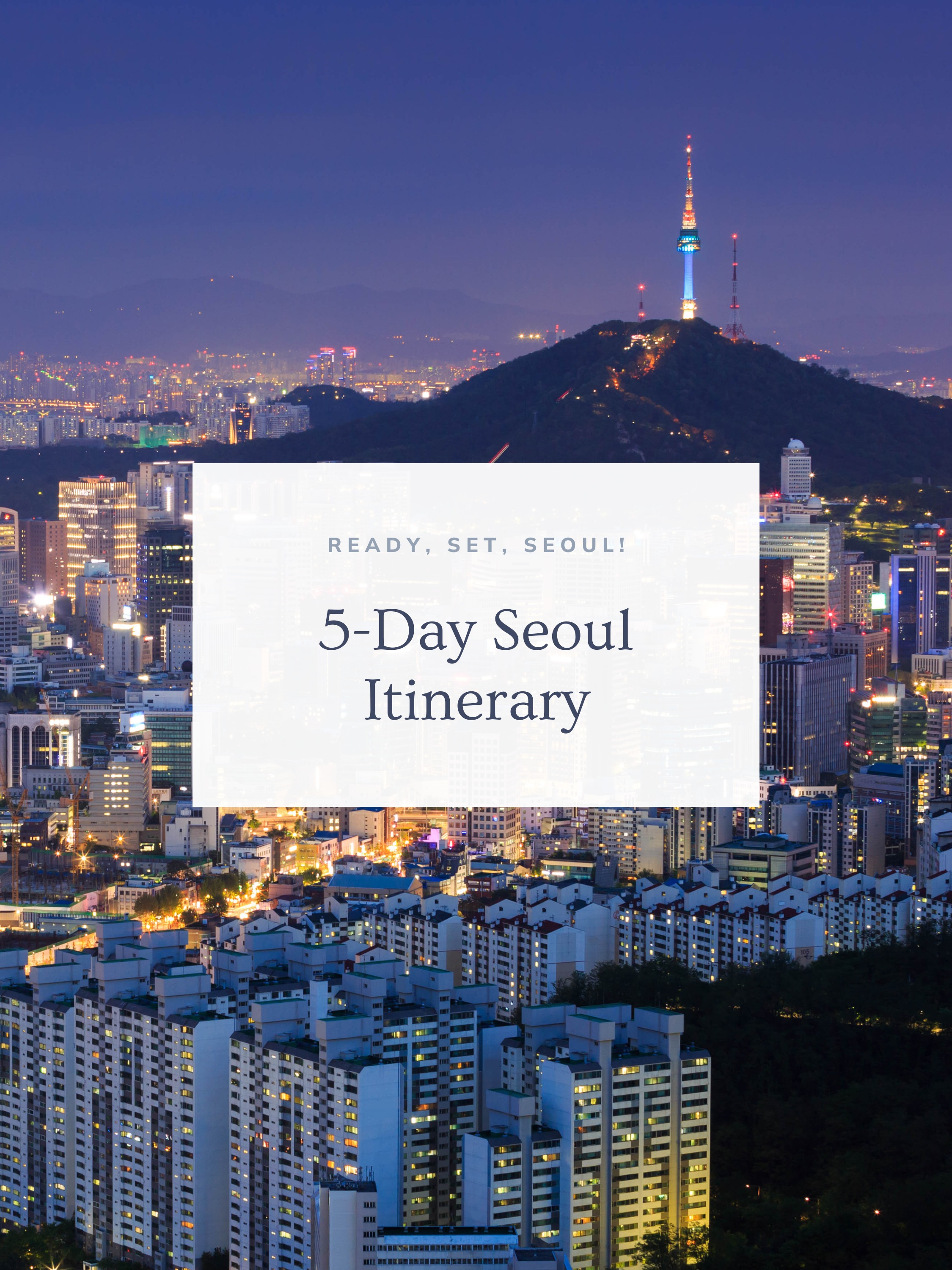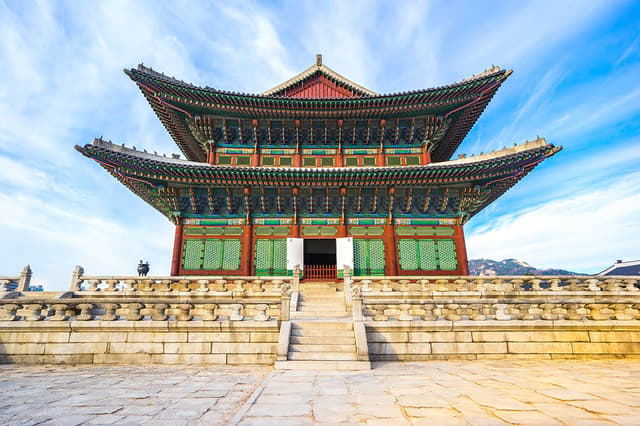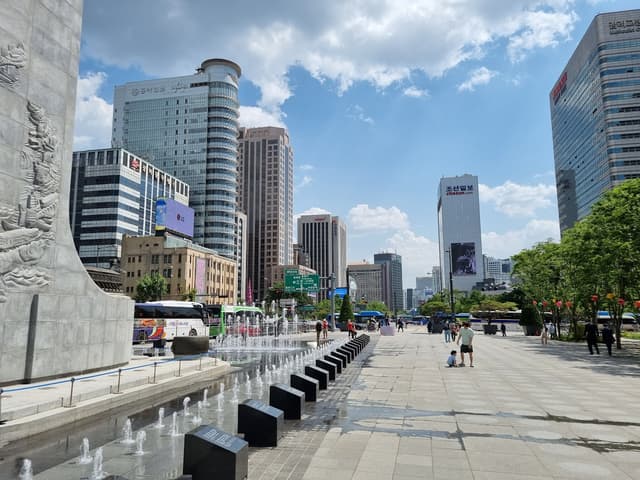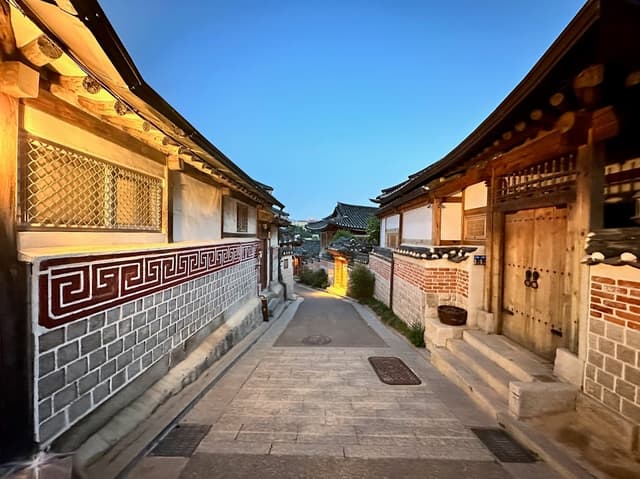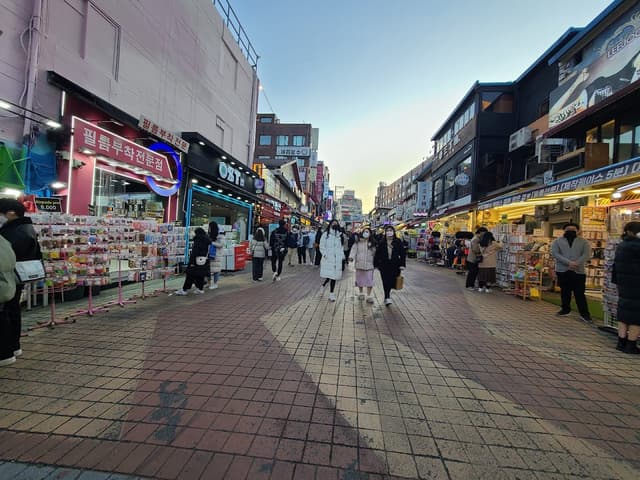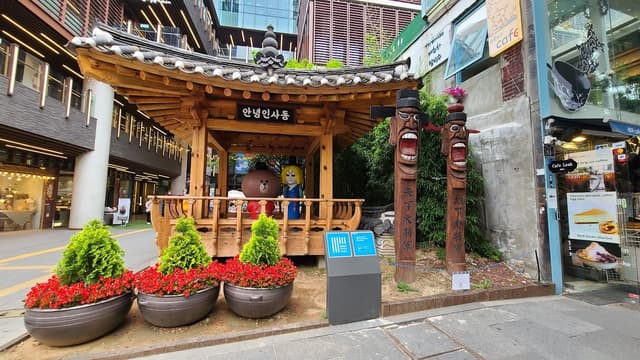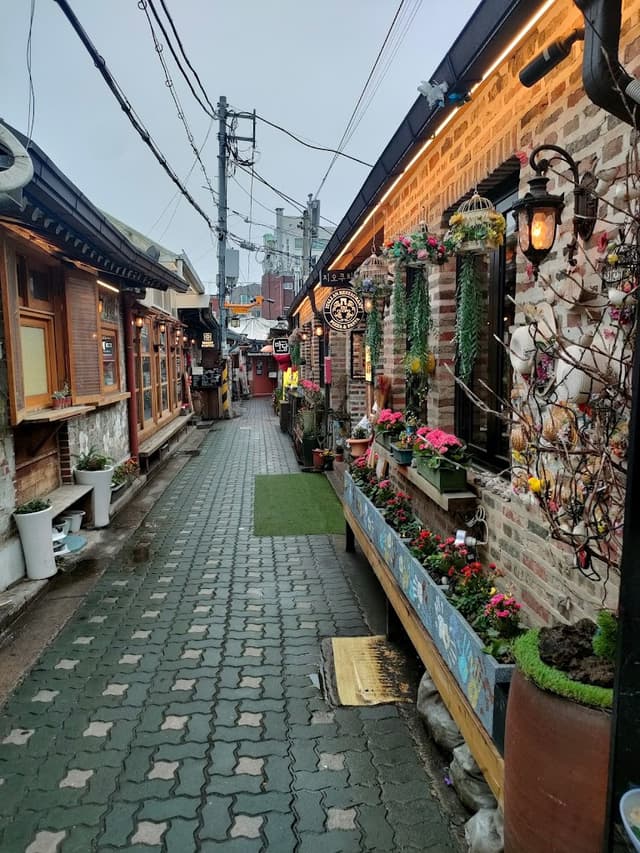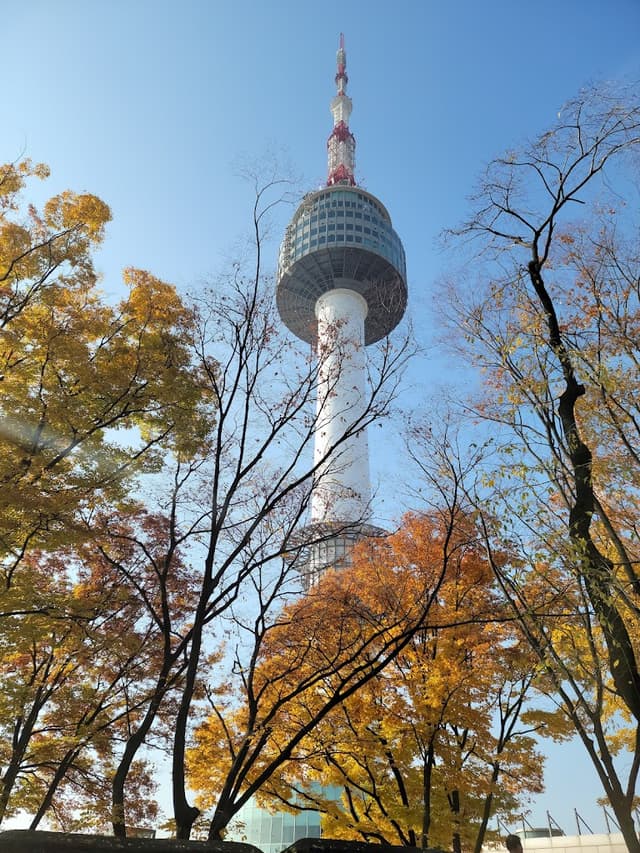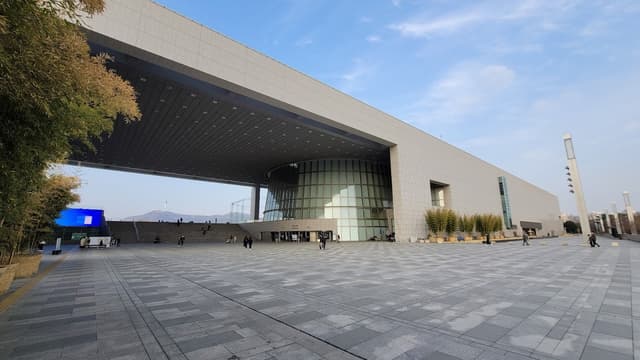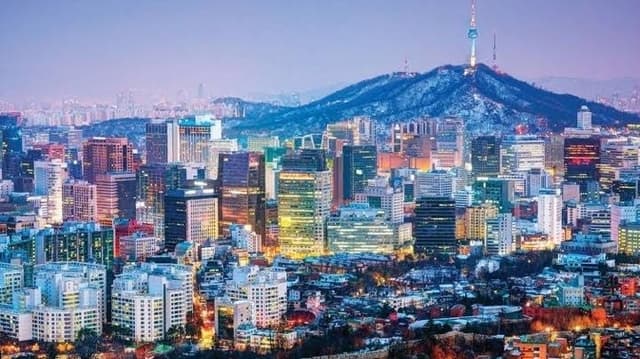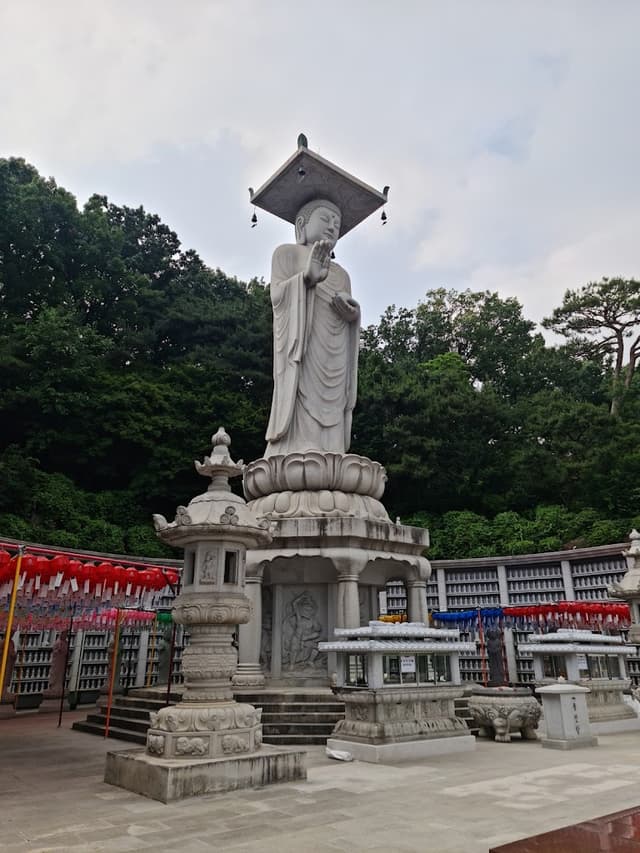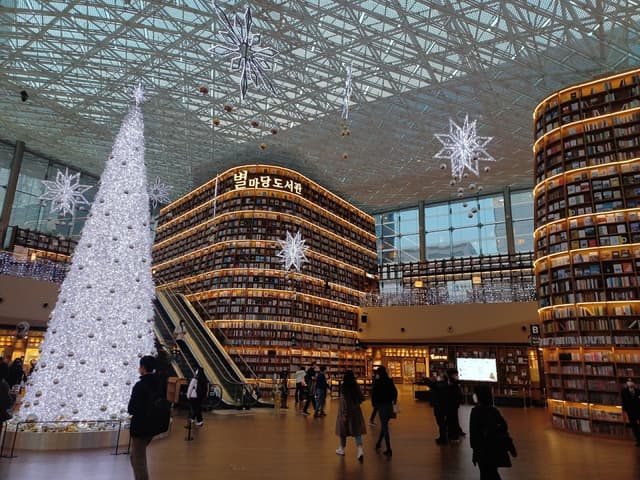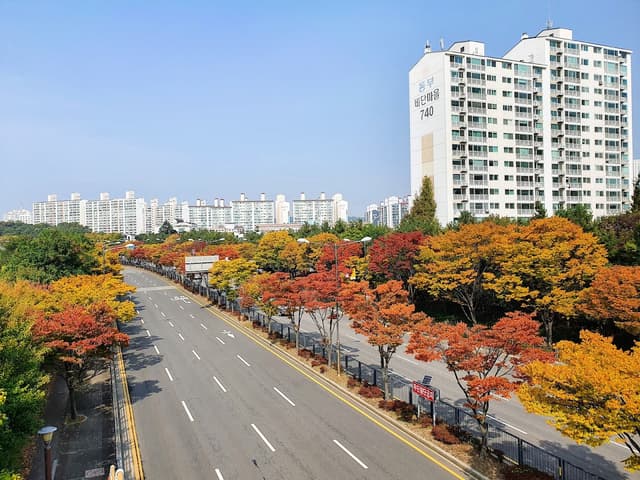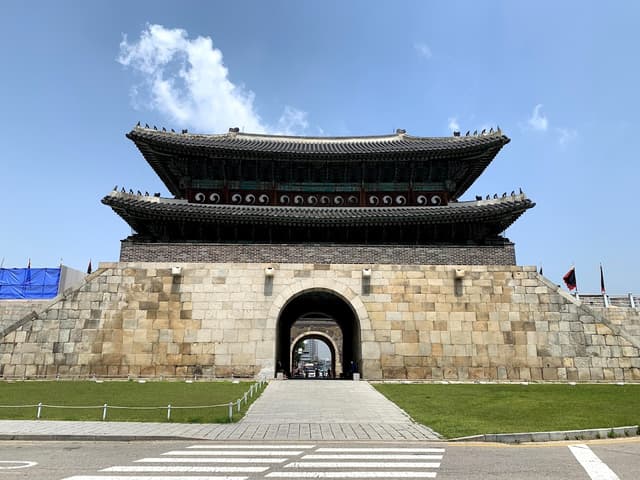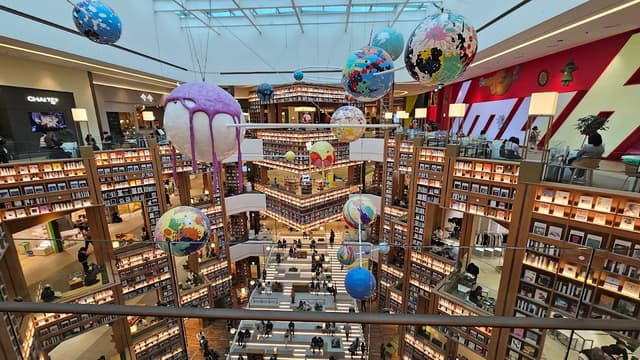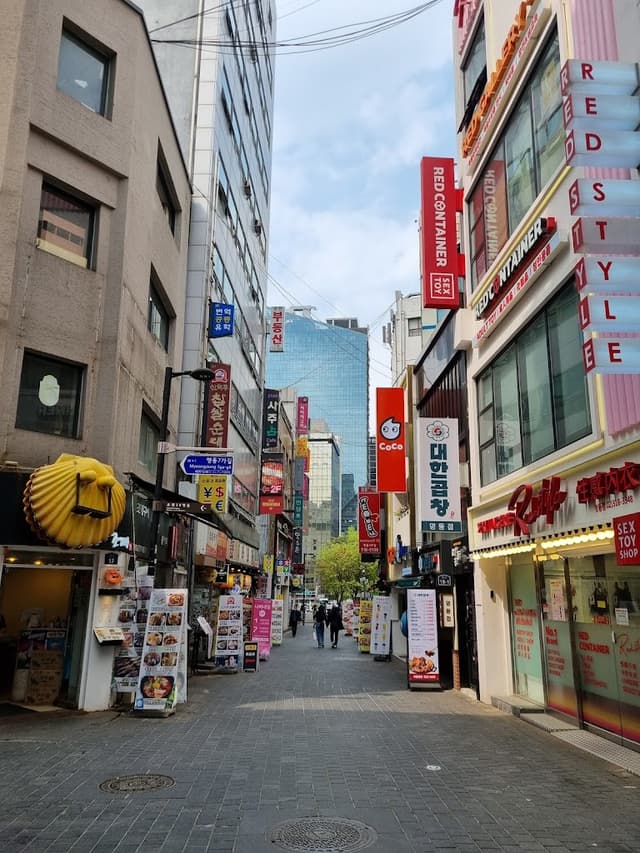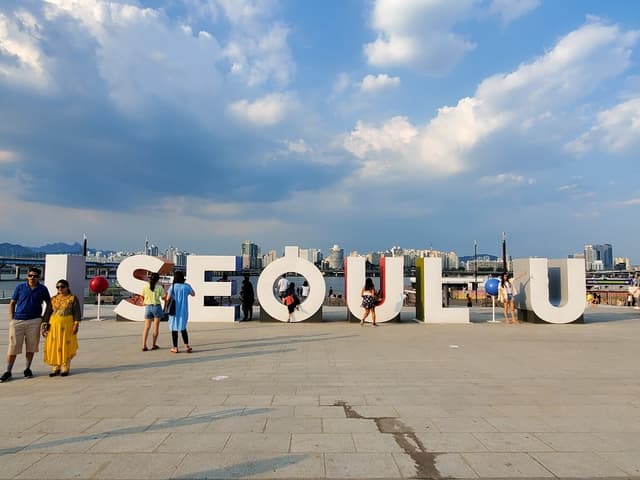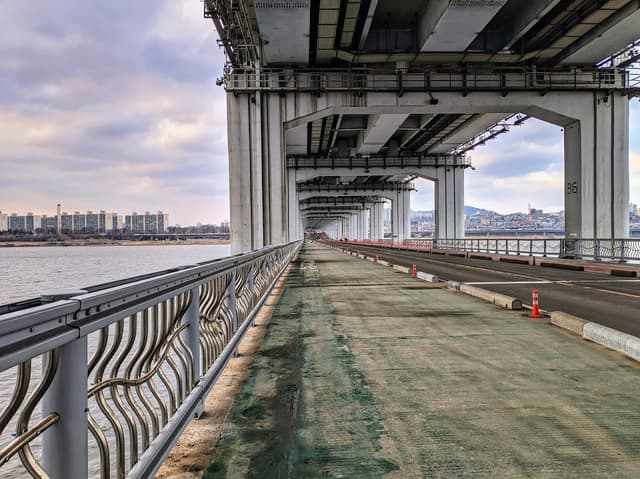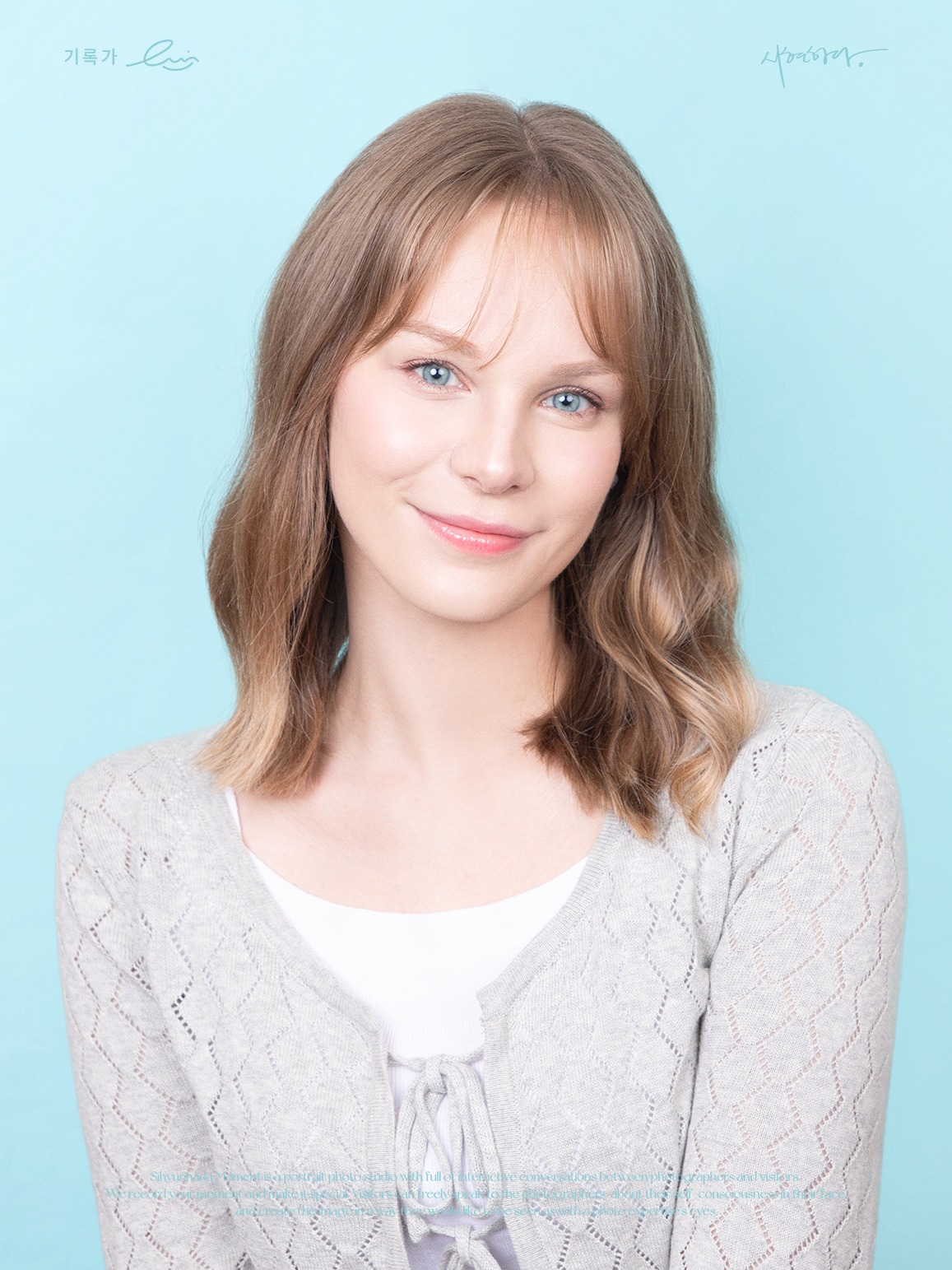Day 1
Start your trip by exploring the historical side of Seoul. Catch the Royal Guard Changing Ceremony at Gyeongbokgung Palace at 10 am (or 2 pm) and take pictures of the beautiful palace and its surroundings. After that, drop by Gwanghwamun Square, right beside Gyeongbokgung. Visit the statues of King Sejong the Great and Admiral Yi Sun-shin and soak in the atmosphere of central Seoul.
In the afternoon, explore the traditional Hanok village in Bukchon, and take a rest at a cafe or restaurant here.
Finish your day by strolling through the Hongdae shopping street.
Gyeongbokgung Palace
@readysetseoul
Historic palaces are a must-visit in Seoul! Gyeongbokgung is the biggest and probably most famous one. It provides glimpses into Korea’s Joseon dynasty with towering granite walls and stunning architecture.
Pro tip: The entry to the palace is waved for everyone wearing a Hanbok! (You can rent a Hanbok in shops around the palace)

Details
Gwanghwamun Square
@readysetseoul
Gwanghwamun Square is located right by Gyeongbokgung. Gwanghwamun Square features statues of two of Korea's most respected historical figures: King Sejong the Great and Admiral Yi Sun-shin. King Sejong is celebrated for creating the Korean alphabet, Hangul, while Admiral Yi is a commander known for his victories against the Japanese navy during the Japanese invasions of Korea (1592-1598). Additionally, Gwanghwamun Square regularly hosts various events and activities.

Details
Bukchon Hanok Village
@readysetseoul
Bukchon Hanok Village is the perfect place to view traditional Korean architecture in the center of Seoul. The village is located in the Jongno district and has lots of cute cafes, restaurants, and souvenir shops.

Details
Hongdae Street
@readysetseoul
Hongdae is famous for shopping and its nightlife. But there is one more thing that Hongdae is known for: Busking!
I remember back in 2018, when I just came to Seoul as an exchange student, one of my favorite free activites was watching busking performances. As I didn’t have the budget to visit actual K-Pop concerts this was my way to at least see some live performances in Korea.
While there isn’t an official busking schedule, many performers share updates on social media. Just search the hashtag #버스킹 (Korean for “busking”) on Instagram or TikTok.
Sidenote: Tipping is appreciated but not mandatory, with performers often providing tipping boxes for audience contributions.

Details
Day 2
On the morning of Day 2, make your way to Insadong. Here, you can see traditional Korean culture and art and crafts. Stop by Ssamzigil to shop for souvenirs or participate in a workshop.
After that, stroll through the Ikseondong Hanok Village, where you can take a rest at a traditional tea house.
Around lunchtime, head to Gwangjang Market and try Korean street food.
In the evening, visit the nearby N Seoul Tower (Namsan Tower), accessible via public bus, cable car or via a cable car. Here, you can enjoy panoramic views of Seoul at night.
Insadong Street
@readysetseoul
Insadong is a district located in the heart of Seoul. This neighborhood is known for its traditional Korean culture, art galleries, antique shops, and wide range of restaurants and tea houses.
During the Joseon Dynasty, Insadong was a residential area for government officials. Over time, it evolved into a place where artists and writers gathered, leading to the founding of numerous antique shops, traditional tea houses, and art galleries.
The area has managed to preserve its traditional charm despite Seoul's modernization, making it a unique neighborhood to experience Korean culture.

Details
Ssamzigil
@readysetseoul
If you are in Insadong, I recommend checking out Ssamziegil. This distinctive shopping mall offers a spiraling walkway lined with shops selling handmade crafts, accessories, and souvenirs.
It's also a place where you can participate in traditional craft-making workshops.

Details
Ikseon-dong Hanok Village
@readysetseoul
Ikseondong Hanok Village, situated in the Jongno District of Seoul, is a historic neighborhood known for its traditional Korean hanok buildings. This area has become a popular cultural and tourist destination, blending historical architecture with modern amenities such as cafes, restaurants, and shops. The village has been revitalized by local entrepreneurs and artists, making it a vibrant spot that offers both a glimpse into Korea's past and its contemporary urban culture.

Details
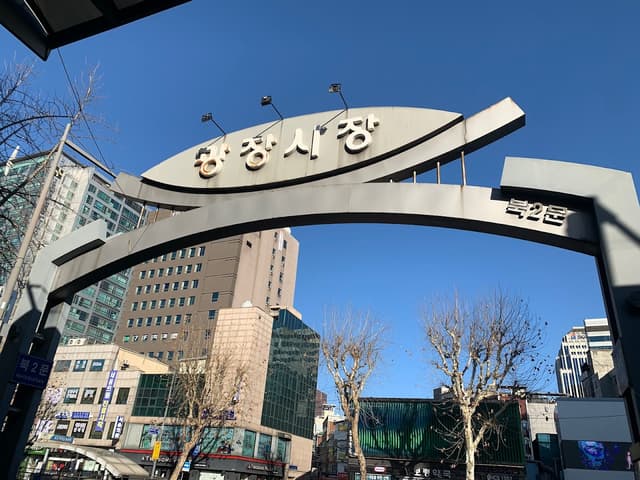
Gwangjang Market
@readysetseoul
Gwangjang Market is probably the most well-known traditional market in Seoul. The market is located in central Seoul and was established in 1905.
The market is known for its wide array of foods.
Some of the most popular dishes include:
Bindaetteok: Mung bean pancakes that are a staple at the market
Mayak Kimbap: Small, addictive rice rolls that are a hit among visitors
Yukhoe: Seasoned raw beef akin to Korean-style steak tartare
Soondae: Korean blood sausage made with noodles and pork blood
Tteokbokki: Spicy stir-fried rice cakes, a beloved Korean snack
In recent years, Gwangjang Market rose to fame through a Netflix documentary that showcases the life of one of the vendors. This made the already popular market even more famous and consequently more touristy. I still think the market is worth a visit, especially if you want to try Korean street food. However, do expect large crowds if you visit.
The general market operates from 8:30 AM to 6:00 PM, while the food stalls typically stay open until 11:00 PM. While the food and vintage clothing sections are open every day, other vendors may be closed on Sundays.

Details
N Seoul Tower
@readysetseoul
N Seoul Tower, or Namsan Tower, is one of the city's most prominent landmarks.
While the admission fee to the top of the tower is 21,000 KRW, accessing the area around the tower, which includes several shops and restaurants, is free and offers just as spectacular panoramic views.
Additionally, there is a cable car that takes visitors to the top of Namsan Mountain, which starts near Myeondong Station exit 3.

Details
Day 3
Start off your third day by visiting the National Museum of Korea and learn about Korean history and art.
In the afternoon, head over to the Gangnam district. Here, you can visit the Bongeunsa Temple and the nearby Starfield Coex Mall.
National Museum of Korea
@readysetseoul
The National Museum of Korea is showcasing over 310,000 artifacts of Korean history and art. It has relocated several times, with its current location in the Yongsan District since 2005. Across three floors you can find galleries dedicated to periods from Paleolithic to Joseon, along with Asian art, calligraphy, and Buddhist sculptures. One of the highlights of the museum is the Oegyujanggak Uigwe, a royal library collection recognized by UNESCO.

Details
Gangnam-gu
@readysetseoul
Gangnam is one of the wealthiest districts in Seoul and is often compared to Beverly Hills, California, due to its high real estate prices and the affluent lifestyle of its residents.
It gained international fame through the viral song "Gangnam Style" by PSY, which satirizes the district's opulent culture.
The district is a hub for luxury shopping, gourmet dining, and high-end living, with numerous luxury boutiques and high-rise apartments.

Details
Bongeunsa Temple
@readysetseoul
My personal favorite temple in Seoul, Bongeunsa Temple, is located in Gangnam.
It is a Buddhist temple that was founded in 794 during the reign of King Wonseong of the Silla Kingdom.
One of the temple's most well-known features is the towering statue of Maitreya Buddha, standing 23 meters (approximately 75 feet) tall.
This is also a popular photo spot in Seoul that lets you capture the combination of tradition and modernity in the city, with the Gangnam skyscrapers acting as a backdrop to the temple.

Details
Starfield Coex Mall
@readysetseoul
Starfield COEX Mall, located in the Gangnam District of Seoul, is one of the largest underground shopping malls in Asia.
It is part of the larger COEX complex, which includes the COEX Convention & Exhibition Center. The mall features a wide range of facilities including over 260 stores, a large cinema complex called Megabox, the COEX Aquarium, and the famous Starfield Library, which houses over 50,000 books and is a popular spot for both tourists and locals.

Details
Day 4
On Day 4, go on a day trip to Suwon, a city just outside of Seoul. Start your trip by visiting the Hwaseong Fortress and the Haenggung Palace. Afterward, head to the Starfield "Byeolmadang" mall for a shopping spree before returning to Seoul in the evening.
Suwon-si
@readysetseoul
Suwon is a very popular day-trip destination. The city is located just an hour outside of Seoul. It is the capital of Gyeonggi Province and is known for its well-preserved historical landmarks, particularly the Hwaseong Fortress, a UNESCO World Heritage Site. The city is accessible via public transportation (subway and bus) from Seoul, making it the perfect easy day trip.
Besides its historical side, Suwon also has a very modern vibe. It is often seen as a “Mini-Seoul,” as it has almost everything that the capital has to offer. From trendy clothing stores to cozy cafes to beautiful parks, There’s a lot to discover in Suwon!

Details
Suwon Hwaseong Fortress
@readysetseoul
Suwon's most famous landmark is the Hwaseong Fortress, or Suwon Hwaseong (수원 화성), a fortress and wall that surrounds the center of Suwon. It was constructed from 1794 to 1796 by King Jeongjo of the Joseon Dynasty and includes King Jeongjo's palace (Haenggung), a perimeter wall, four main gates, and two sluice gates over the Suwoncheon, Suwon's main stream.

Details
Starfield Suwon
@readysetseoul
The newly built shopping mall includes the Suwon Starfield "Byeolmadang" Library. – an open cultural space that communicates with rest, meetings, and books.

Details
Day 5
Reserve your last day in Seoul to do some final shopping on Myeongdong Street. Here, you can also have some Korean street food.
In the early afternoon or evening, visit Yeouido Hangang Park to soak up the Seoul night vibes once more and have a small picnic beside the river.
Myeongdong Street
@readysetseoul
Myeongdong Shopping Street is the perfect place for you if you love skincare and fashion. At affordable prices, you’ll find everything from the latest beauty products to the cutest accessories, like hair clips and jewelry. It’s shopping heaven! Additionally, if you want Korean snacks, drinks, or other souvenirs to bring home, Myeongdong has you covered.
There are loads of stores that cater specifically to tourists and sell classic Korean items, such as ramyeon, green tea, or seaweed.
Additionally, another fun thing to do in Myeongdong is try street food! From Tteokbokki to Hotteok, there is nothing you can’t find at the Myeongdong night market. Now, it might be a tad pricier and less authentic than what you’d find in traditional markets, but hey, if you’re already in Myeongdong, you might as well have a little snack, right?

Details
Yeouido Hangang Park
@readysetseoul
The Han River, or Hangang, is the river that flows through Seoul. It’s the fourth-longest river on the Korean peninsula and has historically been an important route for trade. Now, it has become a scenic spot with pedestrian walkways, parks, and restaurants.
In the summer, locals, especially young couples or friend groups, gather around the river to hang out, have picnics, or drink together.
One of the most popular foods to enjoy by Han River is Ramyeon, which is available at the convenience stores around the river. Delivery food such as fried chicken and Tteokbokki (yes, Korean restaurants deliver to Han River!) is also popular. Around Yeouido Hangang Park, you can also rent bikes for small admission fees.

Details
Banpo Bridge
@readysetseoul
One of the highlights of Han River at night is Banpo Bridge. The Banpo Bridge crosses the Han River, connecting the Seocho and Yongsan districts. It's famous for its Moonlight Rainbow Fountain, the world's longest bridge fountain. Installed in 2009, it boasts nearly 10,000 LED nozzles running along both sides, extending 1,140m and shooting out 190 tons of water per minute.

Details
Traveling to Seoul soon?
Do you want to make your trip to Korea unforgettable? Let me do the heavy lifting!
Order your personalized itinerary by clicking the link below. 👇
Thanks for your support!
Wishing you safe travels and an amazing time in Korea!
- Lara ✨
* * *
